November 2007
Monthly Archive
Monthly Archive
Posted by justin on 27 Nov 2007 | Tagged as: adventure day, art paparazzi, foamers, graffiti, outsider, silliness
Posted by ben on 27 Nov 2007 | Tagged as: essays, poetry, wordy
I recently picked up Walter Bejamin’s . He’s one of those writers who eloquently expounds some fascinating ideas, but often doesn’t offer much in the way of evidence. In his essay The Task of the Translator, Benjamin asserts that “It is the task of the translator to release in his own language that pure language which is under the spell of another, to liberate the language imprisoned in a work in his re-creation of that work. For the sake of pure language he breaks through decayed barriers of his own language. Luther, Voss, Hölderlin, and George have extended the boundaries of the German language.” Although he points us to examples of what he is talking about, he stops short of explaining what about these authors’ translations illustrates his point (he does, at other points in the essay, talk specifically about Hölderlin’s translation style, but in a way that is abstract enough as to not be really convincing to someone, like myself, who can’t read German).
Because of these concerns I was particularly glad to come across this essay by Seamus Heaney in the Guardian recently (via The Page). Heaney illustrates quite clearly how translations of English poetry (Shakespeare, Tennyson and Longfellow) influenced Japanese verse in the late nineteenth century; and how, a few years later, under the influence of translations of Japanese haiku, Pound and Eliot helped change the way the western world looked at poetry, giving birth to Imagism. Heaney then compares traditional Japanese verse to Old Irish verse, pointing out that the seeds of this “Japanese” vein of writing had also been buried in the western tradition.
But what I’m most interested here, coming back to Benjamin, is the notion that these were translations that Eliot and Pound were reading. Perhaps there is a sense in which the translators of Shakespeare into Japanese or Basho into English deserve more credit for helping to move the target languages in a certain direction than do the poets writing in those languages. Heaney clearly isn’t setting out to prove this point, and he certainly doesn’t demonstrate it, even inadvertently. It could very well be that Benjamin’s notion that the “character” of a particular language is actually shifted by (good) translations from another language is faulty, and that this blending of traditions has more to do with how writers choose to use a language rather than its underlying character. However, I think some of the evidence Heaney introduces about the historical development of poetic traditions could serve to bolster Benjamin’s argument.
The more I think about these ideas, the closer I get to the black hole of linguistics debates (especially when pondering Benjamin’s appeal to “pure language”), so I think I’ll stop here, before I get sucked in.
Posted by ben on 26 Nov 2007 | Tagged as: acquisitions, borders, upcoming events
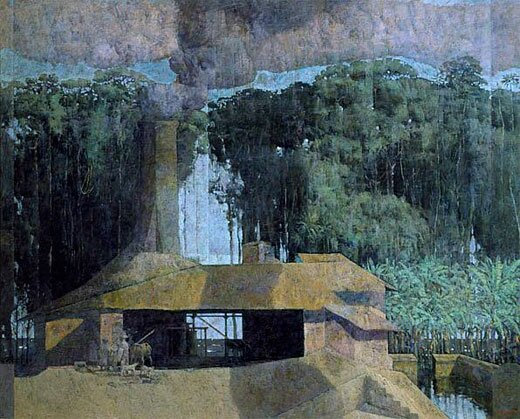
The San Antonio Museum of Art recently acquired this Armando Morales painting called Trapiche (Moulin a Sucre) (although the museum seems to be referring to it by the English translation of the title, The Sugar Mill). This 1991 oil on canvas showed up in a Sotheby’s auction in 2003, and this was their description:
In Trapiche (Moulin a Sucre) Armando Morales seems to break with his own tradition of presenting the jungle as timeless and dislocated. In fact the painting belongs to a series executed between 1991-92 based on sketches of buildings on the border between the natural and civilized worlds. As in other paintings in the series, Morales forces the viewer to cross these boundary lines through a series of intersecting axes: the unexpected break in the forest wall that permits a view through to the open sea and distant horizon; the plume that rises from the sugar mill’s chimney to join the clouds that form a second skyline; and of course, the elongated tree trunks that terminated in a billowing foliated canopy.
On Thursday, November 29, Marion Oettinger (SAMA’s curator of Latin American Art) will read from a Gabriel Garcia Marquez essay on Morales to celebrate the acquisition. The reading will start at 6 pm, and is free to the public.
Posted by ben on 25 Nov 2007 | Tagged as: arts organizations, opportunities, upcoming events
San Antonio mayor Phil Hardberger has thrown his weight behind a downtown “arts night” called Luminaria to take place on March 15, 2008. A few people in San Antonio’s grassroots contemporary art scene are trying to make sure that this community is involved. Jason Stevens (of Potter-Belmar Labs) has started a Luminaria blog to give some information on the event until the official site is up. Jason has posted a map showing where the event will take place on Houston Street, an artist proposal form, and more details about the event and how it is being organized.
There have been rumors that out of a $200,000 budget, no money for this event was set aside for artists. These rumors appear to be false, and money will be available for artists to cover expenses, although not for honorariums. We’ll try to keep you posted on future developments.
UPDATE: As noted in comments, the official Lumaria web site is now up and running.
Posted by justin on 20 Nov 2007 | Tagged as: adventure day, art paparazzi, in yo face, possibilities, responses/reviews, silliness
Heres a little recap of the Ken Little performance of Yoko’s “Cut Piece.”
(all photos by Justin Parr, click here for a more extensive folder of images)
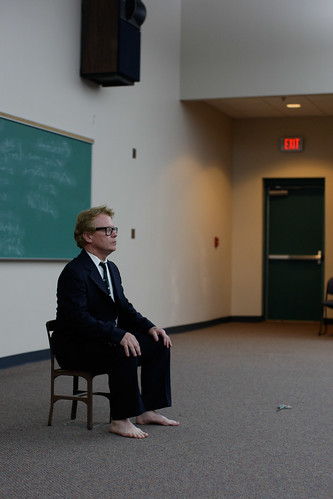
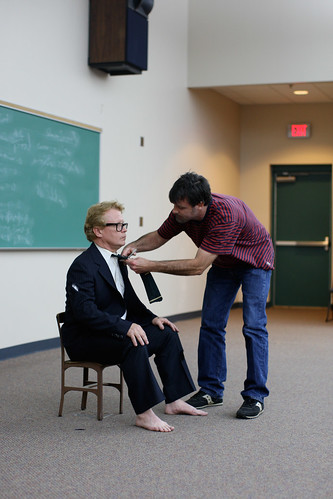
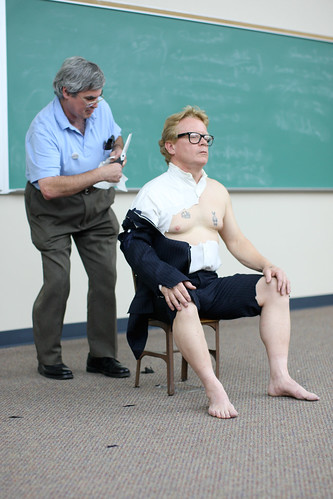
Posted by ben on 18 Nov 2007 | Tagged as: art paparazzi, video/film
Is Damien Hirst working on the new Indiana Jones movie? Or is this some stunt by Saatchi to make sure everyone knows that crystal skulls are hot?
Posted by ben on 13 Nov 2007 | Tagged as: poetry, responses/reviews
This post is a response to Kristy Perez’s recent Chez Bernard (Artist Foundation) show at the Friedrich Building. Photos by Justin Parr.
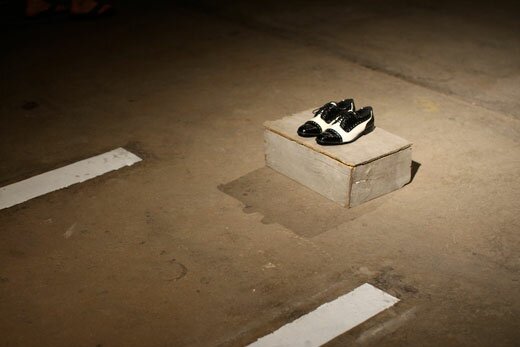
Love in Return (After Anteros)
When we speak of love we begin with the feet. This is dictated by the movement of the heart, but it suggests the movement of the eyes. Of course the mirrors strip us bare even as they sink into the shoes. At what point does the wheel (the base of the leg apparatus) begin to turn? At what point does our fate return to the nest, gilded and headless (armless, legless)? Should I stop here, love, on the white banks of the river? You’ll find your shoes alone. Never. You’ll find your dissolusion in the air. If you reach the top of the ladder then do we find beauty? Yes I’m saying beauty is dissolusion. My heart brings me back to your feet. And yes those mirrors push me straight up your skirt. I’m building your leg straight through your heart. Don’t look away, love.

If at First You Don’t Succeed
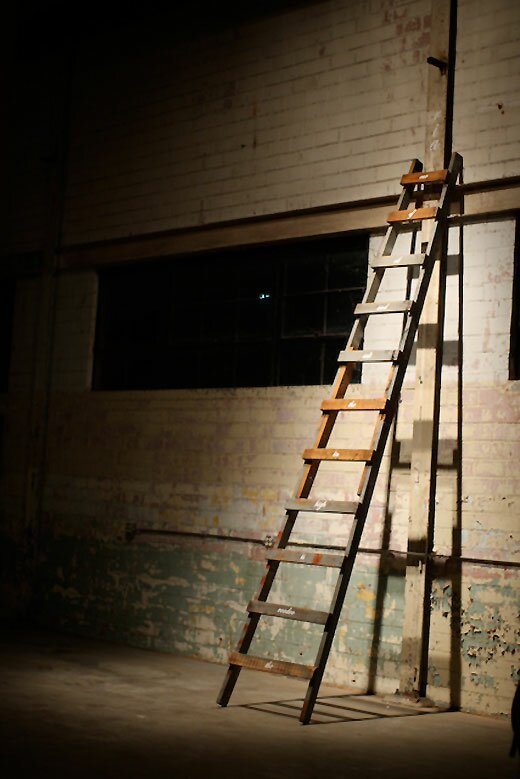
The Voodoo is High in the Salt and the Oil of Our Air
Posted by ben on 12 Nov 2007 | Tagged as: outsider, responses/reviews
This is the third in a series of posts on publicly accessible outsider art installations in San Antonio, Texas. The first two covered the work of Samuel Mirelez and Rev. Seymour Perkins.
I’ve only just started writing this post, and already I recognize it to be a failure. I’m writing on Ed Clark’s Christmas House [], but I’ve never met Ed Clark, never been inside the house, never seen it in its full lit-up Christmas glory. All I know about the project is what my friend Leigh Anne told me: Ed Clark turned his house into a permanent Christmas-themed installation in honor of his late wife, who loved Christmas. That sound you hear is the shattering of any remaining pretense to journalistic credibility here on Emvergeoning.
So my plan to is show you some good photos of the outside of the house, shot, of course, by Justin Parr, and talk a bit about why I started this little series of posts in the first place.


Amid all the chatter about the art market, whether the bubble will burst or whether diamond-encrusted skulls are here to stay, it can be refreshing to look at people working outside of this art world ecosystem. It’s not that these outsiders aren’t ego-driven, or don’t want to be paid for their work, or are somehow more “pure” than a Creative Capital-trained art entrepreneur. But what we see in the work of Samuel Mirelez, or Rev. Seymour Perkins, or Ed Clark is a gesture mediated by the materials and needs of their own private lives. It is no coincidence that these artists turn their homes into installations, or that their works begin simply as gestures of love. While many artists try to universalize their work, to escape the personal, we see these outsiders revel in their own eccentricities to the point where the work becomes an homage to the very fact of being human. So through this work we can see more directly the original motivations, tools, and creative solutions of the artist. You can see the initial, unobscured impulse to create as well as the edifice which is built on top of it.
Continue Reading »
Posted by ben on 10 Nov 2007 | Tagged as: announcements, books, interviews
My interview with Alan Licht is now available in the newest issue of NeoAztlan. Also in this issue: Kate Green interviews Angela Bulloch and Steve Peralta interviews Ioana Nemes. Licht’s on sound art came out this week as well; look for my review in the upcoming issue of Artlies.
Posted by ben on 10 Nov 2007 | Tagged as: essays, poetry
It’s wonderful that we live in an age in which an essay such as this can exist:
Melancholy and joy are poetry’s modest, binary legacy. Affirmation and repudiation taken together form a somewhat psychotic gesture, the “thumbs up” or “thumbs down” casually borrowed from the Roman caesars (both caesars and poets rely on the thumb). And isn’t poetic melancholy at times only rapture in disguise, as if the poet wished to enjoy inspiration just a bit longer and so hides it in a heat-resistant container? At times these affirmations and negations may be slightly ahistorical, pronounced without reference to new facts and conclusions. The court assembles, experiences inspiration and, ignoring the witnesses, ignoring both the prosecutor and the defense, passes its apodictic, beautifully composed sentence. Is Baudelaire’s complaint really so different from Ovid’s?
Posted by michelle on 07 Nov 2007 | Tagged as: art paparazzi